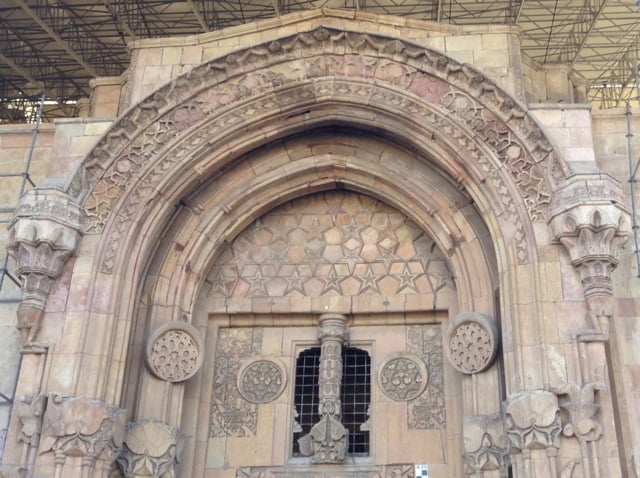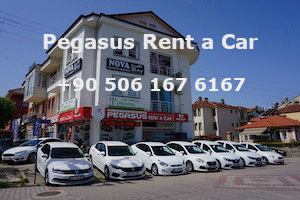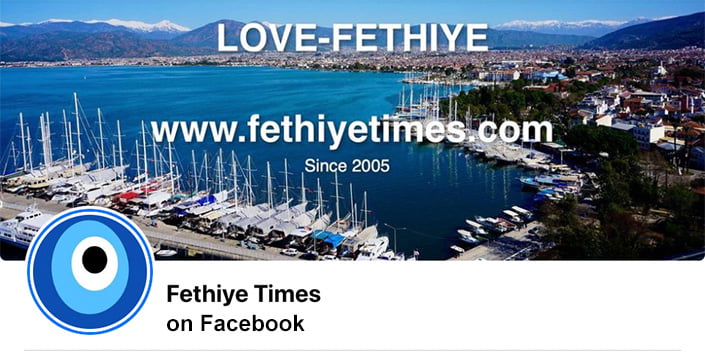Written for Fethiye Times and with photographs by By Mike Vickers and Jan Jones
The final part of an adventure to Eastern Turkey
Please click on the links below if you missed the first two articles.
All aboard the Turistik Doğu Ekspresi to Kars
Kars. The colder the weather, the warmer the people
Back on board the Turistik Doğu Ekspresi, this time from Kars to Ankara
It would not be unreasonable to expect the return trip from Kars to Ankara to be, more or less, roughly similar to the outbound journey, after all, there is only one railway route between the two cities, but nothing could be further than the truth. For a start, before we’d even cleared the outer suburbs of Kars, we were preparing for bed. The 10 pm departure time was five hours later than when we left Ankara and this inevitably resulted in one major difference – on this journey, we would be spending two nights on the train.
Fortunately, sleeping on the train no longer brought any surprises. We already knew from our outward trip what was involved – the invisible person trying to push you out of bed as we swung around each curve and the hollow echo of barrelling through yet another tunnel. With lovely memories of our troika ride on Lake Çildir, we were soon lulled to sleep. I hoped Champion’s stable was as warm as my bed, but somehow I don’t think that was likely.
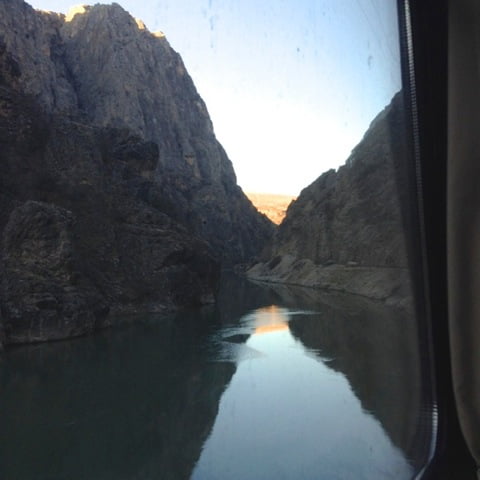
When we woke the following morning, we’d already passed Erzurum and Erzincan (without incident this time, thank heavens) and were deep in the Euphrates gorge again, the track clinging to the cliff wall and sweeping through tunnel after tunnel. Iliç came and went. The river remained our constant companion for many kilometres before finally bending its way south towards the Iraqi border. We continued eastwards until, eventually, the train pulled into the mountain town of Divriği, dominated by its castle.

Surrounded by snowy peaks and under a bright blue sky, the air in Divriği was crystal clear. We eschewed the organised minibus trip and instead took a taxi directly to Divriği Ulu Camii ve Darüşşifası, the Great Mosque and Hospital of Divriği, rightfully a UNESCO World Heritage Site, one of the first to be awarded in Türkiye. This wonderful building stood apart and above the town in a position of dominance.




As the troika ride had been special for Jan, this was for me. I’ve been fortunate enough to have seen some magnificent and unusual buildings over the years – who can forget that tetrachonchal church in Kars – but the Divine Doors of Divriği are on an altogether different level. The craftsmanship and artistry that flowed from mind to chisel represent a stand-out moment in the long history of stone carving. In contrast to the rather plain exterior, each of the three exquisite 900-year-old portals are simply stunning. To quote UNESCO, there are no other examples of the three-dimensional and intricate geometric styles and flowing figures of plants.
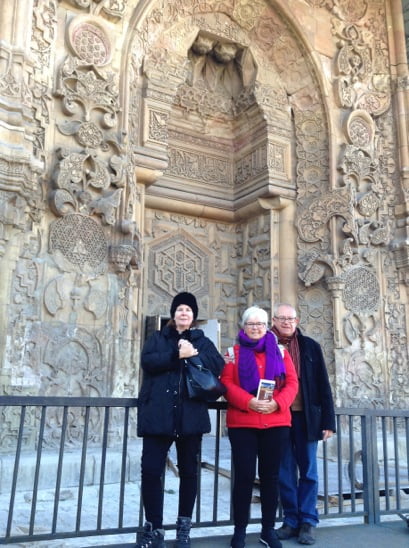
Sadly, we were unable to go inside as it’s currently undergoing restoration and is wrapped in a cloak of protective scaffolding with a huge shiny metal roof over the entire building, but a metal walkway has been constructed to allow visitors a good external view. Apart from the custodians, we three were the only people there and spent some time admiring this amazing building.
We left the mosque and hospital and walked down into the old town just as some minibuses arrived, disgorging passengers from the train, and negotiating a rabbit warren of narrow steep streets, found a lokanta that supplied lunch, followed by a cheerful taxi driver took us back to the waiting train for 10 lira.
Unlike our outward journey, there were only two scheduled stops, and a few hours later we pulled into Bostankaya for our final excursion to Sivas. This entailed a forty-minute coach ride as Bostankaya is about 30km south of Sivas. The coach took us directly into the city centre and we disembarked outside the Congress Building, famed throughout Türkiye. Called by Mustafa Kemal, the Sivas Congress united delegates from all Anatolian provinces and was a turning point in the country’s history, paving the way for the fight for independence and confirming Atatürk’s position as leader of the national resistance.

Opposite the Congress stands the 15th century Kale Camii and a trio of magnificent 13th century Seljuk monuments, the twin tower Çifte Minareli Medrese, the Bürüciye Medresesi and the Sifaiye Medresesi, once one of the most important Seljuk medical schools. All of these are closely grouped and easy to explore, each providing a fascinating glimpse into the past when, located on the Silk Road, Sivas prospered.

We liked Sivas immediately. It was bright, bustling and a helluva lot warmer than Kars. There was a good feeling about it, with plenty of broad avenues and lots of interesting back streets that warranted much more investigation than our limited time allowed. However, that said, our first task was finding somewhere to eat. You may possibly have noticed this has been a recurring theme on our trip.

We eventually found a very trendy restaurant, more than half of which was devoted to nargile smoking cool hipsters. The only notable thing about my hips is that they ache. It’s against the law to smoke indoors in a public place, but several terrace doors were open, so by logical extension, the outdoors now flowed indoors. It could be argued we were in the wrong place, especially as the ground floor bayan loo door was being repaired by a locksmith, meaning a trip up to the third floor for the ladies, but we were made very welcome and had a most pleasant meal.
The sun was setting as we waited for the coach to take us back to the train, that lovely golden late afternoon glow just catching the tops of the twin minarets of the Çifte Minareli Medrese.


From Sivas, it was a straight run through the night back to Ankara. Jan and I left the curtains open in our cabin to watch the pale snowy landscape slide past. I know we stopped for a while at Kayseri some time during the night, but a grey morning came soon enough and the train finally entered the Gar at Ankara. After a journey of over 2600km to Kars and back, our time on the Turistik Doğu Ekspresi finally came to an end.
This time, the weather in Ankara was much more amenable. The cases were deposited in the left luggage lockers once again and we set off in search of breakfast, taking a taxi to the southern suburb of Kizilay, chosen for its proximity to the city centre and reputation for street-eating. Although it was fairly early on Sunday morning, we found a back-street lokanta that was snug and warm – but not quite as snug and warm as the Sütlü Çardak in Kars – and settled down to a hearty breakfast. This was student territory. No grey hair in sight. Except on our table. To be honest, it’s actually really rather nice to be surrounded by so many young people. A tad invigorating, all that youthful vim and vigour.
Fortified by breakfast, there was really only one place to visit and so we took a short taxi ride to Anıtkabir. Set upon a low hill in the centre of the city and surrounded by beautiful gardens, the mausoleum of Mustafa Kemal Atatürk lies at the heart of Ankara and the country he forged.

The mausoleum is an airy building, stately and graceful, the surrounding city visible between its tall columns. Atatürk’s final resting place is not enclosed or shut away, but open, as if to allow the city and country beyond to reach inside. It’s a simple structure, but the gilt ceilings are lovely. A constant stream of visitors filtered in and out, pausing to pay their respects. Soldiers stood in silence, keeping vigil, their military uniforms immaculate.

We visited the nearby museum of his life. His influence permeated almost every aspect of life in the young Turkish Republic; language, female emancipation, transport, commerce, education, everything. Rarely does a leader have such a positive, dynamic and reforming influence on the lives of his countrymen.
Outside again, my attention was caught by flocks of exotic colourful birds swirling around the mausoleum and clinging to its stonework, their happy musical calls echoing through the structure. Green parakeets now live there, bringing cheer and colour to the Anıtkabir. I have a feeling Atatürk would have approved.

Later in the day, we retrieved our cases from the station, took a taxi to the Otogar and waited for our coach in a cafe. The Ototgar is always busy, with lots of shops and stalls selling snacks and drinks for the journey. Coaches arrived in convoy, exchanged one set of passengers for another, and then left in convoy. The 10 pm Kamil Koç service to Fethiye departed dead on time and unlike the train at Erzincan, we made damned sure were on it! In contrast to our coach journey up to Anakara – I was asleep before we’d cleared the city and only stirred when we were descending from the Karabel summit on our way towards Seydikemer. What a relief! That was a journey I was certainly not looking forward to – and now I’d missed it completely.
What a great end to a fantastic adventure!
A note on excursions
As before on the outward trip, these are all optional. If you wish, you can remain on the train during these stops. Prices (correct as of January 2020) are as follows:
Divriği taxi from train station to Ulu Camii: 10 lira per person
Divriği taxi from town centre to train station: 10 lira per person
Sivas excursion, return coach trip from Bostankaya station to Sivas city centre: 30 lira per person
To summarise:
If you’re travelling in winter – and for sheer scenic drama, we recommend that you do – pack good boots and lots of warm clothes. Obvious, really, but it’s fundamental. Layer up to stay toasty. If you’re a bloke, get yourself some warm long johns. Buy the right pair and they will definitely enhance your sex appeal. Or not…
Wear a hat. Ears really hurt when they’re cold – and don’t even get me going on gloves!
It is possible to visit both Ani and Lake Çıldır all in one day, and many tours available in Kars offer this combination, but they lie on opposite sides of Kars and we felt it would be just too much to attempt in one day. Our recommendation is to visit each on a separate day.
Celil told us quite a few visitors disembark from the train at 2 am, rest briefly, go to Ani and Çıldır, and then get back on the train in the evening of the same day. Does anyone else think this would severely diminish your enjoyment of the experience? In any book, that’s an exhausting itinerary to attempt after a 1300km train ride. We found three full days in Kars perfect; the first day to recover and explore Kars itself, the second to visit Ani and the third to see Lake Çıldır.
A popular alternative to returning on the train is to fly back to Ankara from Kars airport. Yusef and Ayşegül did so, but the obvious sacrifice is missing out on Divriği and Sivas.
The highlights? For Jan, Lake Çıldır and the troika ride. For me, seeing Ararat, Ani and wolves all on one day, and for Michelle, haunting Ani with Armenia in the distance. Oh, and the wolves!
Very special thanks:
To Yeşim and Paul at Amber Travel in Kaş, we cannot thank them enough for arranging everything. The bespoke package they prepared for us included absolutely everything except the coach journey to and from Ankara and the optional tours available during the train stops.
Amber Travel has an enormous wealth of experience organizing such individual trips and we strongly advise anyone planning any kind of excursion up the country to contact them at 0242 836 1630. Their office can be found at Yeni Cami Sokak. Boşgelmez Apt. No. 1, 07580 Kaş.
Celil Ersözoğlu was engaged by Amber Travel to act as our guide. We very much enjoyed our time with him. Not only is he an experienced and very knowledgeable English-speaking professional guide, but also easy-going, entertaining and cheerful company, with a ready smile and chuckle. If you ever find yourself in need of a guide in Kars, Celil can be contacted at 0532 226 3966 or at celilani@hotmail.com
Thinking of going?
The Cost. This largely depends on whether you want a standard tourist hotel or something a little classier. We chose the former and were warm and toasty but it was basic – there are plenty of quite lovely hotels in central Kars and Amber Travel can advise you. We also hired a professional guide for a couple of days and besides his fee, a standard tip of 50tl pp per day was also expected – worth every penny. All told, including our excursions and bus up to Ankara but without evening meals and tips, we brought it in for about £550 FOR THE TWO OF US. It is impossible to break all the elements down but there is a premium if you want to travel solo. For example – Michelle paid 488tl for her cabin on the train but we paid 600tl for a double cabin. There would also have been a single supplement at the hotel and the single bus fare to Ankara was 7tl more than the seats bought as a couple. Whatever the split – the value for money in this adventure was outstanding
Consider the time of year. January and February will provide you with tingly toes and red noses but captures the true essence of Kars in all its bleak snowiness. Celil advised us that April and May are sublime when it comes to carpets of wildflowers. Apparently, there are 1500 varieties to provide a carpet of loveliness which to marvel at. September and October are good for the glow of autumn colours but remember the landscape is steppe – not many trees. It is also worth noting that Kars in summer makes Fethiye seem cool in comparison! Also, check the school Turkish holidays if you want an adult trip.
The train cabins are compact and comfortable but one of you will have to have that upper bunk – make sure your joints are working! And that trip to the toilet in the middle of the night…the carriages have two toilets. At one end there is a Turkish toilet and at the other end is a European toilet. We would still be able to use them despite being out of the EU. Our experience was that they were both kept reasonably clean but you can’t account for other passengers in your carriage. The train was manned by very helpful stewards and if it is necessary they can be called on to address any issues. They also clean the toilets during excursion stops.
How is your Turkish? How far do you like to be out of your comfort zone? We had a ball but didn’t experience much in the way of English from the time we left Fethiye (apart from the Turkish students we met in Kars). People were warm and helpful at all stages but you need to at least be able to speak ‘Turklish’ or have confidence and a great sense of humour. The benefit of booking through Amber Travel was that we had a 24-hour emergency number in case we got into difficulties. Please note that all train excursions were led by Turkish-speaking guides – still well worth going on though.
Like a drink? Hmmm…we only found one restaurant in the entire trip offering alcohol. A bottle of Çankaya which cost 130tl. We also imbibed Rakı that night which enhanced the dance moves no end. If it’s a boozy holiday you want, this trip is not for you but it is a sacrifice worth making for the unforgettable experiences you will have. Fethiye it is not but head east Young Man – you will truly discover Türkiye!

